
Jesuit Celebrants
Wishing Fr. Calixto Silverio, SJ (April; 20, 1940) and Fr. Catalino Arevalo, SJ (April 20, 1925) the happiest of birthdays!
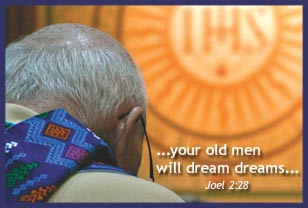

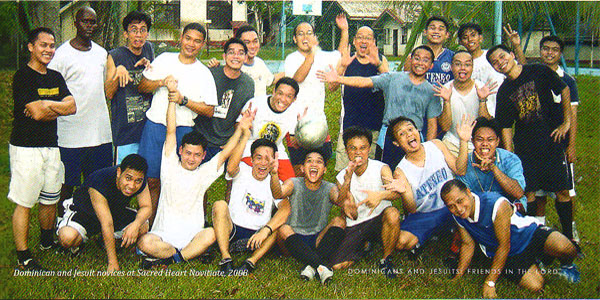
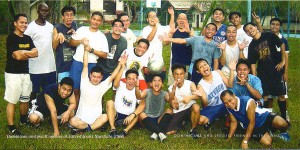
(Read the whole article from The Windhover, The Philippine Jesuit Magazine, Year XVI, Volume 4, 2014)
If one were to have an anthology of Catholic jokes, a good part of the selection would be about Jesuits and Dominicans, the butt of the joke depending of the sympathies of the narrator. The two orders have many things in common: unswerving love for the Lord and his Mother, the use of study and learning to better defend the Church, and a strong sense of communal identity that unites their members. Yet their approaches, deriving from the spirit and times of their founders, sometimes set them on opposite courses on many issues, such as the problem of grace and the Chinese Rites. In the Philippines, however, young Jesuits and Dominicans have found ways to encounter each other as friends and co-workers in the vineyard.
The Manaoag encounter
As part of their formation, the Jesuit novices used to go on pilgrimage to Manaoag. They would journey on foot, walking two by two going to the Shrine of our Lady of the Rosary in Manaoag, Pangasinan, approximately 170 kilometers away from their starting point in Bocuaue, Bulacan. The pilgrimage was an arduous four to five-day walk, beggng for food and sleeping in the houses of strangers. However, when they arrived in Manaoag, at the Dominican Novitiate of the Annunciation, they received the welcome of long-lost friends from the Domincian novices.
The Dominicans offered them accommodation, food, and rest from the long and tiring journey. They even invited the Jesuits to join them in their regular schedule of praying in common, eating in common, and having recreation in common. They organized sessions where they shared stories about their formation and the wealth of their respective spiritualities. Those encounters have served as the fertile seed bed where Filipino Dominicans and Jesuits formed relationships that bridged differences.
La Naval and Loyola, nurturing a brotherhood
These friendships have been further deepened by the participation of Jesuits during the feast day of La Naval. For several years now, on the second Sunday of October, Jesuit scholastics have graced the grand procession in honor of our Lady of the Rosary, La Naval de Manila, a procession that commemorates the 1646 victory of Filipinos and Spanish soldiers against the invading Protestant Dutch. Jesuit scholastics and brothers, together with their Dominican student-brothers or coristas, would join the throng of thousands of devotees walking through the streets of Quezon city, praying the rosary and shouting “Viva la virgen”. After the procession, seminarians from various diocesan seminaries in the metropolis` would join other religious in a banquet prepared by the Dominican community to cap the celebration of the great feast of our Lady. For the scholastics and coristas, the meal provides the perfect opportunity to catch up on what’s happening to their friends on “the other side”.
The Jesuits have their chance at reciprocating Dominican hospitality in February, when the Dominicans visit Loyola House of Studies. There, the sharing over a festive meal, a tour of Loyola and its environs, capped with an initimate mass with the Jesuits, provide many an insight for the Dominicans in their own journey as religious. The gifts their Jesuit friends give on these visits are always treasured by the coristas.
Looking forward to a grace-filled future
So today, when the Dominicans and Jesuits come together, they are merely following the warm friendship began long ago by their forefathers. If the problem of grace was one of the contentious issues between the members, now grace is working to bring them closer. It was grace that brought Ignatius to Manresa, grace that brought Bishop Salazar to Fr. De la Plaza. Now it is grace that brings Jesuits and Dominicans again to Manaoag, Loyola House of Studies and La Naval. Assuredly, it is grace that will further strengthen this friendship for the building of the Kingdom.
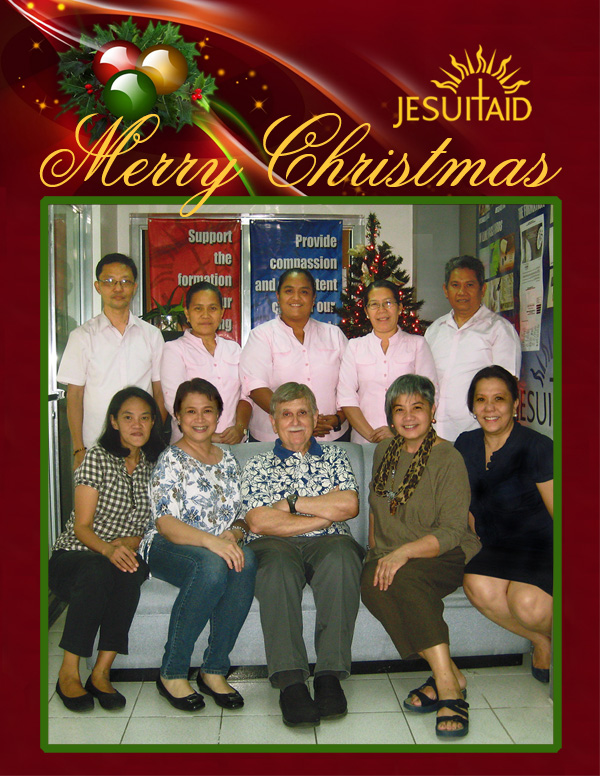
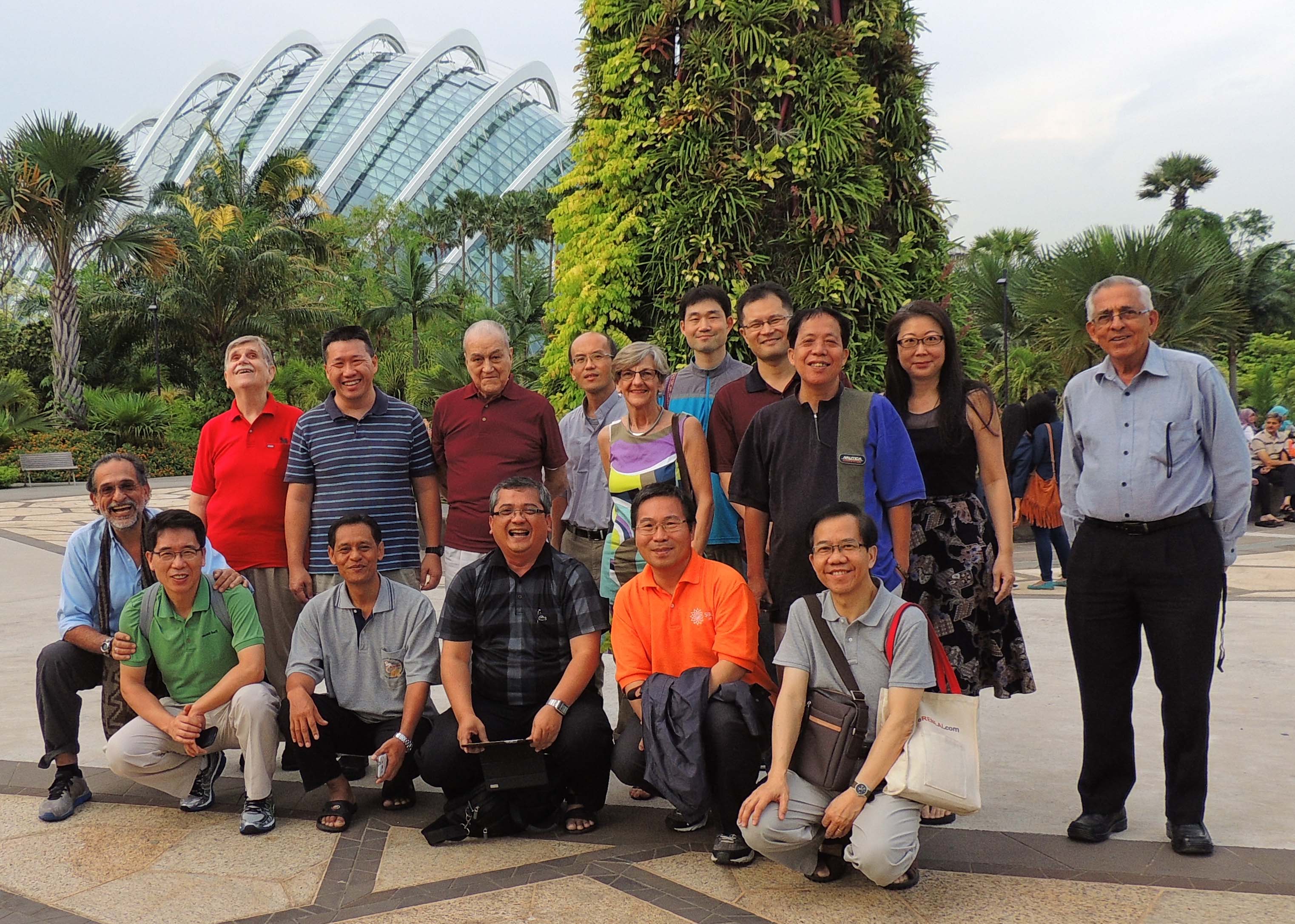
Last April 28 to May 1, 2014, Fr. Herbert Schneider, S.J., PJAA’s Executive Director, attended the meeting of the Development Officers’ Jesuit Conference in Asia Pacific (DO JCAP), held at Kingsmead Hall, 8 Victoria Park Road, Singapore.
The JCAP Development Officers gathered in Singapore from 28th April 2014 to 1st May 2014 for their annual meeting.
We welcomed Fr. Hyung-chul SJ from Korea Province, Fr. Vincent Dinh SJ from Vietnam Province and Karen Goh from JCAP who joined us for the first time. We shared our experiences of being development officers in our provinces, regions and missions. It was important for us to listen to one another on what we have done and the challenges we faced. Listening, sharing and learning from one another were a big part of our meeting. Fr. Jorge Serrano SJ from Rome joined us for the meeting. Workshops for budgeting, newsletter, goals & priority, communication and emergency relief cooperation were conducted. We felt very much like a community of JCAP development officers in our time together. Fr. Herbert Schneider, SJ from Philippines province has been elected to be our coordinator. During the days of our meeting, we were treated with delicious Singapore food. The lay collaborators from the organizing committee gave wonderful logistical support during the meeting. We are grateful to them.

Botika sa Kapilya aims to improve the health care delivery system of very poor, marginalized families living in the Upper Pulangi, a rural area of Bukidnon Province, as well as other areas. The program, through Fr. Tex Paurom, SJ, addresses acute medical illnesses (injuries, infections and the like) by providing medical diagnoses and medicines with the Church, as a base station. Hence, the name, Botika sa Kapilya.
Treatment and medication for these families who live very far from health centers, can be quite expensive since they have to travel to Malaybalay city to get treatment and buy medication.
Consider these costs in 2012 for two persons ( the sick person and a companion) in the table below:
| Fare 70 pesos x 2 ways x 2 persons | Php | 280 |
| Multicab fare from bus terminal to the hospital | 40 | |
| Consultation Fee | 500* | |
| Food for two persons (breakfast, snacks, lunch) | 250 | |
| Laboratory Fees—500-1000 | 750** | |
| Prescription Medicine | 1250*** | |
| Total | 3,070 | |
| *Php 300-500, **Php 500-1000, ***Php 1000-1500 |
Fr. Tex, has shown that we can reduce health costs by situating the Botika within the infrastructure of the Church. He elaborates further in an interview conducted by Windhover in 2012:
“Windhover: How does this system work? What services do you provide?
Doc Tex: Botika is designed to complement and collaborate with the health related efforts of the Local Government focusing on poor residents of rural areas – with special emphasis on the Indigenous People — not regularly accessed by the local health units. The program primarily aims at responding to their acute medical health care needs by empowering Chapel based volunteer health workers in managing simple acute medical conditions and, within their felt competence, institute interventions using medicines in the medical box which our program provides.
Thanks to communications technology, a licensed physician can easily be consulted by the trained, locally-based volunteer health-worker using mobile communication.
The economic impact of an acute health condition can be staggering to a family with no budget for health (as the case for most Filipino families!) As we know, health and poverty is very much intertwined. Providing them BotikasaKapilya will eliminate at least half the necessary expenses involved with treating acute medical conditions (e.g. transportation, consultation, and food costs) and can help alleviate their current economic difficulties.
Windhover: What are the challenges and difficulties for such a program?
Doc Tex: Sustainability is the word that is put at the end of every sentence regarding this program. The health workers need to be empowered. This implies 4-6x seminar training per year.
One of the most challenging things also is the actual operation or management of the Botika. We arestill experimenting drug pricing schemes that will make the program both sustainable and affordable to the needy. However, since this is a charitable program, I instructed that in emergent or urgent situations, the Medicine Box is “opened”(payment to be discussed later.) We know that this will result to bad debts and easily depletes the small capital, thus the need to regularly subsidize the Botika system from funds from generous benefactors – but this is a small price to pay for providing medical care that can at times save lives and prevent already poor families from sliding into tragically desperate conditions.
The medical box containing 3,000-5,000 pesos worth of medicines is loaned to the chapel. The chapel owns it. The Empowered Health Worker manages it and gives status reports to the chapel officers during their monthly meeting. So far I continue to infuse capital into the Botika to keep supplies coming. (Thanks to very generous benefactors).
Windhover: Speaking of benefactors, how is the program currently being supported? How can readers of the Windhover (friends of the PJAA) help?
Doc Tex: Currently, the pilot phase of this project – involving the residents of upper Pulangi under the parish of Our Lady: Mary, Mediatrix of all Grace – is funded by the J. Homer Butler Foundation of Staten Island in New York, to whom we are terribly grateful.
But already we are seeing the possibility of replicating the project throughout the Diocese of Malaybalay. Bishop Jose Cababntan, DD is very supportive of the project and is keen to see it spread. Currently, we are generating and collecting data for study and analysis. The aim is to come out with a template that can be applied to other areas with same context as upper Pulangi.
Already, other Jesuits like Fr. Ogie Cabayao,SJ of Cabanglasan and Fr. Mat Sanchez, SJ of Miarayon are asking if this program be extended to their parishes. Plans are underway to start a “soft” opening in their parishes. And so any further support from individuals and groups will be most welcome.
Windhover: How much does it cost, more or less to get the program going in a chapel?
Doc Tex: We are doing the numbers now and tracking expenses (given that we have not been in operation for that long). But roughly the cost of sponsoring the start-up for one chapel amounts to around only PhP 10,000. This would be enough to cover for the medicine box and its contents, a basic medical kit (with Sphegmomanometer, Stethoscope, weighing scale, thermometer, tape measure and Journal). Around P5,000 can cover for the training needs of several chapels for the entire year. This would mainly be transportation fare and food expenses for the participant health workers and resource persons. And Php 3,000 will be enough to fund the cost of mobile communications of one Botika , making on-call volunteer doctors accessible to the health worker via celfone for at least 6 months.
Windhover: What other things have become crucial to the success of the program?
Doc Tex: One thing is the “infrastructure” that Catholic Parish-Chapel system provides. This is a stable structure through which we regularly reach far-flung communities on difficult terrain. If a community, no matter how far flung, is part of the Parish-Chapel system, this means that they are regularly visited by a priest or Church worker. These visits are what this program maximizes for the distribution of medicines and regularity of communication. In this system is also the trust and indigenous knowledge that has been key to a successful start.
Creativity in maximizing local resources would be second. And lastly, compassion. Over and above the competence and experience of the volunteer doctors and health workers, the awareness of the context and being in the know of the situation in rural areas, and the ability to empathize, although a tall order of qualities of the back-up physician, spell a great difference.”
Reference:
Paurom, Tex. MD. SJ. “Botika sa Kapilya: Frontiers in Health Care”, Windhover. 3 .2012: 32-36. Print.
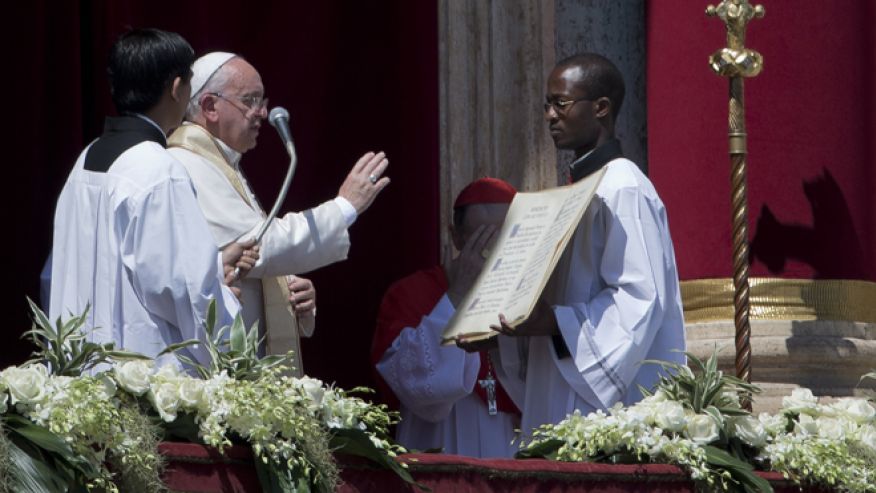
VATICAN CITY – The following is the text of the Vatican’s official English-language translation of Pope Francis’ Easter Sunday “Urbi et Orbi” (Latin for `to the city and to the world’) read by him in Italian from the central balcony of St. Peter’s Basilica.
Dear Brothers and Sisters, Happy Easter!
The Church throughout the world echoes the angel’s message to the women: “Do not be afraid! I know that you are looking for Jesus who was crucified. He is not here; for he has been raised . Come, see the place where he lay” (Mt 28:5-6).
This is the culmination of the Gospel, it is the Good News par excellence: Jesus, who was crucified, is risen! This event is the basis of our faith and our hope. If Christ were not raised, Christianity would lose its very meaning; the whole mission of the Church would lose its impulse, for this is the point from which it first set out and continues to set out ever anew. The message which Christians bring to the world is this: Jesus, Love incarnate, died on the cross for our sins, but God the Father raised him and made him the Lord of life and death. In Jesus, love has triumphed over hatred, mercy over sinfulness, goodness over evil, truth over falsehood, life over death.
That is why we tell everyone: “Come and see!” In every human situation, marked by frailty, sin and death, the Good News is no mere matter of words, but a testimony to unconditional and faithful love: it is about leaving ourselves behind and encountering others, being close to those crushed by life’s troubles, sharing with the needy, standing at the side of the sick, elderly and the outcast. “Come and see!”: Love is more powerful, love gives life, love makes hope blossom in the wilderness.
With this joyful certainty in our hearts, today we turn to you, risen Lord!
Help us to seek you and to find you, to realize that we have a Father and are not orphans; that we can love and adore you.
Help us to overcome the scourge of hunger, aggravated by conflicts and by the immense wastefulness for which we are often responsible.
Enable us to protect the vulnerable, especially children, women and the elderly, who are at times exploited and abandoned.
Enable us to care for our brothers and sisters struck by the Ebola epidemic in Guinea Conakry, Sierra Leone and Liberia, and to care for those suffering from so many other diseases which are also spread through neglect and dire poverty.
Comfort all those who cannot celebrate this Easter with their loved ones because they have been unjustly torn from their affections, like the many persons, priests and laity, who in various parts of the world have been kidnapped.
Comfort those who have left their own lands to migrate to places offering hope for a better future and the possibility of living their lives in dignity and, not infrequently, of freely professing their faith.
We ask you, Lord Jesus, to put an end to all war and every conflict, whether great or small, ancient or recent.
We pray in a particular way for Syria, that all those suffering the effects of the conflict can receive needed humanitarian aid and that neither side will again use deadly force, especially against the defenseless civil population, but instead boldly negotiate the peace long awaited and long overdue!
We ask you to comfort the victims of fratricidal acts of violence in Iraq and to sustain the hopes raised by the resumption of negotiations between Israelis and Palestinians.
We beg for an end to the conflicts in the Central African Republic and a halt to the brutal terrorist attacks in parts of Nigeria and the acts of violence in South Sudan.
We ask that hearts be turned to reconciliation and fraternal concord in Venezuela.
By your resurrection, which this year we celebrate together with the Churches that follow the Julian calendar, we ask you to enlighten and inspire the intiatives that promote peace in Ukraine so that all those involved, with the support of the international community, will make every effort to prevent violence and, in a spirit of unity and dialogue, chart a path for the country’s future.
Lord, we pray to you for all the peoples of the earth: You who have conquered death, grant us your life, grant us your peace!”
Source:
Associated Press. April 20, 2014.Pope’s Easter Message ‘Urbi et Orbi’. Fox News. Retrieved from: http://www.foxnews.com/world/2014/04/20/pope-easter-message-urbi-et-orbi/
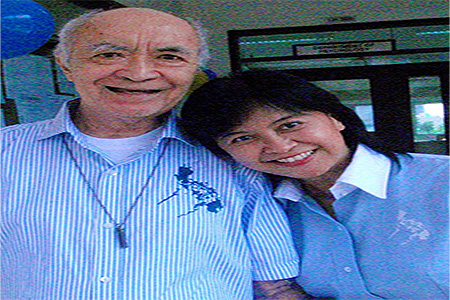
I met Jesuit priest, Jaime Bulatao, Fr. Bu or Pabu to his students, during my freshman year as a Psychology major at the Ateneo de Manila University. When he was introduced to us during the Freshmen Orientation Seminar as the founder of the Ateneo Psychology Department, I told myself then that this guy must really be ancient enough to have that stature as a founder! To my surprise, he was a cheerful gray-haired priest who welcomed us to the Department of Psychology.
As we toured our home department, I noticed that he had the strangest room in the faculty area in the Bellarmine building. I used to wonder why his things were always in disarray until I was told how he preferred to keep his place that way because he would not be able to find what he needed if they were organized in another way. It wasn’t long before I got to know Fr. Bu as there was no way any psychology major would miss him in the department or along the halls of Bellarmine. It was a treat to be invited into his room full of books across a wide-range of topics and novel items not to be found elsewhere. He was always excited to show curious students like me his new finds from Quiapo — from rods of different shapes, to crystal balls of all sizes, and to what looked like anting-anting or amulets. Soon, I met his dwende friends who lived along the Balete tree along the Bellarmine sidewalk. Best of all, he enjoyed taking me on a “journey” through what I would later on learn to be “hypnosis.”
Inside the classroom, Fr. Bu was a teacher who demanded much from us but gave much more of himself. During my undergrad years, I had him for History of Psychology, Independent Research and Hypnosis. During my graduate years, although I did not pursue Counseling or Clinical Psychology, I took a class in Abnormal Psychology because he was the instructor. As always, he animated his students with a great deal of stories and trivia, and challenged us with exams that required much critical thinking. He was very open about discussing anything that interested us in class, as long as it was related to our discussion. However, he made it clear from the very start that he could not stand noisy students who disrupted the flow of the learning in class.
Once, during a lecture class in History of Psychology, I found myself chatting with my seatmate. Fr. Bu was always nice to me, thus, I never thought I would ever get his ire for what I thought was a casual conversation with the guy seated next to me. We sat across the teacher’s table and before we knew it, Fr. Bu threw a chalk at us to interrupt what must have appeared to be a more engaging discussion between two students right in the center of the classroom. Fortunately, the chalk did not hit my face but I got his point and never dared to do the same thing in any of his classes again.
He also expected us to come to class prepared to participate and contribute our thoughts or insights. He said he did not want to waste his time talking to himself as students sat passively in his class. Many of us took note of this but there was this one time when no one appeared to prepare or have the energy to participate in class. It must have been one of those hell weeks during our senior years when we could hardly keep up with our mounting requirements. Fr. Bu attempted to ask a few questions but no one offered any reply. After a few minutes, we were all surprised to see him pack up his stuff from the teacher’s table and walk out on us in the middle of the class! He remarked that it was absolutely pointless to go on with the course with a bunch of zombies. It was the first time Fr. Bu was known to have walked out on a class and we felt truly at a loss for words and strategies to get him back into the classroom that day or in the succeeding days. The class then decided to send one of our female classmates, known to be ever calm and sweet, as our emissary to apologize for our non-participation and persuade Fr. Bu to return to our class. He did not return to our class that day but in the succeeding days when he was finally convinced to resume our class, we knew we had to do our part in the learning process if he were to stay with us. Fr. Bu modeled and challenged us to make the most of every learning opportunity.
I have known Fr. Bu for more than half of my life. More appropriately, I guess, I should say that he has known me for more than half of my life. Fr. Bu has seen me through my undergrad and graduate studies, through my marrying and un-marrying years, and through the challenges of my parenting and teaching years. As always, he was unconditional with his support for me in whatever I decided to pursue but was uncompromising in his desire for excellence. When I decided to leave my post at the Ateneo to join a pioneering effort for sport psychology in the country, many did not think much of my decision, except for Fr. Bu who expressed excitement over what he recognized as breaking ground at that time. Through the years, as my study and practice in the field intensified, he continued to encourage me and would proudly introduce me to his friends and students as “the great sport psychologist.” It was always humbling to hear him say that of me but it certainly gave me a great boost of confidence to pursue the field and eventually, specialize in it. He always asked about the athletes under my care and even met some of them to share much of what he did in hypnosis that aligned with mental training for competition. Before I knew it, some of them looked forward to my sessions, not because of me but because of the opportunity to see Fr. Bu! Indeed, Fr. Bu never ran out of generosity, even if his physical energy was already running out.
Much has been said and will be said of Fr. Bu as the great mentor to generations of psychologists. Fr. Bu is all that and more. He is more than all that because Fr. Bu has embedded himself in countless lives through the generosity of his heart and soul. If we try to figure out what drives one man to do all that he has done and be all that he was to many of us, we would certainly come to the conclusion that he must have drawn all that energy and inspiration from some Unlimited Source that can only be God. Indeed, Fr. Bu was truly and foremost, a man of God.
[ I wrote this essay for Fr. Bu last 22 March 2010 for a book on him but it never made it to print so am sharing this on the occasion of his 90th birthday 22 Sept 2012]